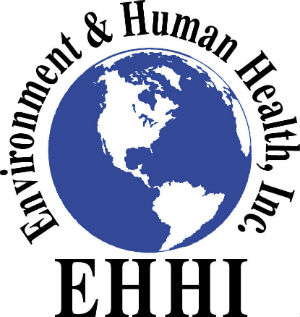Healthy Schools: Press Release
New Haven, Conn., January 4, 2018—Environment and Human Health, Inc. (EHHI), an organization of physicians and public health professionals, is embarking on a new project to make schools healthier places for students to attend. Starting in January, 2018, EHHI will be visiting local health departments and superintendents of schools with their newly published brochure that lists 12 ways to make schools healthier environments for students. Students spend an enormous amount of their waking hours in the school environment. The younger children are particularly vulnerable to their environments due to their small size and special physiology. It is therefore very important that schools be as environmentally safe as possible. Many of the school areas of concern listed below do not actually cost money to implement, they are simply new ways to look at different situations. Pesticides Art Supplies and Art Rooms New Carpeting Damp Areas and Damp Carpeting Chemistry Laboratories Copy Machines Testing for Radon, Lead and Arsenic Cleaning Products Used in Schools New Construction and Renovations Exhaust from Buses or Motor Vehicles Young Children's playgrounds Synthetic Turf Fields Environment and Human Health, Inc. (EHHI) is the same organization that changed the way school buses were run because they found high levels of diesel exhaust in the cabs of school buses. School children were being heavily exposed to diesel exhaust as the rode on the school buses to and from school. EHHI continues to work to make school environments safer places for our children to attend.
Pesticides are toxic and students should have as little exposure to these chemicals as possible. If a school must use these products inside, they should never be used when students are in the buildings and parents and teachers should be notified a day in advance. The least toxic materials possible should be used. Students and teachers should not be allowed back into the buildings until the residue is gone. Only trained and licensed people should be allowed to apply pesticides. The outside grounds should not be treated with pesticides unless there is a health concern, such as poison ivy, and then prior notice should be given to teachers and parents.
PArt rooms should have proper ventilation. Many art supplies are toxic and become airborne irritating the lungs and bronchial tubes. It is recommended that ventilating systems have between 15 and 20 cubic feet of outdoor air per minute per occupant. Caution should be used to make sure that the contaminated air not circulate into the other parts of the building through the ventilation system.
Many carpets, backings and adhesives contain formaldehyde and out-gas for long periods of time. Children should not be exposed to formaldehyde, no less over extended periods of time. When new carpeting is ordered, the carpet, as well as the carpet backing, should be required to be formaldehyde-free. In addition, the installer should be required to use formaldehyde-free and non-toxic adhesives. Formaldehyde is a respiratory irritant as well as a carcinogen.
Mold can grow in areas of dampness, and many children and adults are allergic to mold. Molds can cause asthma as well as other health problems. Areas in schools that are wet or damp should be immediately remediated.
Chemistry laboratories and other school laboratories that use hazardous materials should be properly ventilated, making sure that the exhaust does not enter other parts of the building.
Copy machines out-gas ozone and therefore should be well ventilated. These machines are often placed in small unventilated spaces with people working near them. The ozone that copy machines put out is harmful to lung function.
Radon is a colorless, odorless and tasteless radioactive gas that emanates from rock and soil content in the ground. Radon is a lung carcinogen and therefore should be tested for, and if found, can be rather inexpensively remediated. School drinking water should be tested for lead and arsenic.
Many cleaning products are toxic, therefore cleaning staff should be required to use the least toxic products that are efficient and available. In Connecticut, for example, the law states that no person shall use a cleaning product inside a school unless such cleaning product meets guidelines or environmental standards as established by an approved third-party certification program. Teachers should not bring their own cleaning products into their classrooms.
Good indoor air quality should be one of the chief criteria in planning a construction project. The contract should require least toxic materials that are practical and work schedules that will not put children and teachers at risk with compromised air quality due to the construction. Particular attention should be given to avoiding wood products that use large amounts of formaldehyde as bonding agents, such as particle board. New furniture can also be a source of formaldehyde and therefore, it too, should be specified to be formaldehyde-free, just as with new carpeting.
Schools should make sure that the air intakes of the ventilating systems are not in areas where cars or buses idle, so that the incoming air in the school is laden with diesel and car exhaust. Also, school buses should not idle as they pick up students after school to go home or let them off in the morning.
Playgrounds should never be surfaced with shredded waste tire rubber mulch. The rubber mulch contains many carcinogens and carbon black, which is also a carcinogen. Every tire is made up of between 20% percent and 30% percent carbon black and small children should not be exposed to such toxic materials. Either sand or wood chips are safe surfacing materials for school and town playgrounds.
Environment and Human Health, Inc. (EHHI) maintains that the safest surface for students and athletes to play on is grass. Synthetic Turf Fields contain many toxic chemicals, get excessively hot in the warm weather, cause many skin abrasions and therefore skin infections, and are expensive to install and properly maintain. These fields have a shelf life of 10 years at the most, and then they need to be replaced—costing close to a million dollars a piece.
